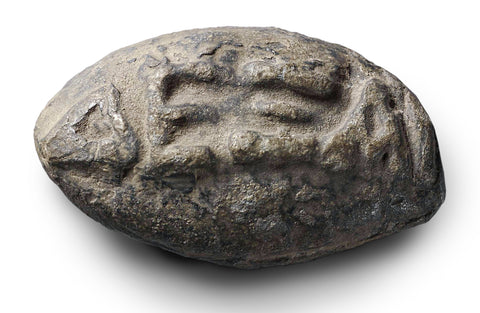
From Rocks to Bombs: Even in Ancient Times, Soldiers Wrote Messages on Ammunition
The history of bullets predates firearms by thousands of years. Bullets of many materials, even including lead, were used throughout the ancient and classical worlds by highly trained, deadly soldiers. Although the term conjures up images of suburban pranksters today, back then the “sling” was among the most feared weapons.
A sling would generally be as simple as two lengths of cord attached to a leather ammunition pouch. Slingers held both cords and spun the sling in a circle, generating centrifugal force, before letting one cord go with precise timing, sending the sling bullet flying.
Different lengths of cord or release times could produce different speeds and ranges, and early slings are recorded as firing faster and farther than bows of the time. The current Guinness World Record for firing a sling bullet sits at 477 meters (about 1,565 feet), a distance reported as common by classical writers. The famed Welsh longbow, on the other hand, rarely exceeded 400 meters.
The earliest written description of the use of a sling as a weapon is the famous fight between David and Goliath in the Book of Judges. Goliath, described as a giant armored warrior, was challenged by David, a young Israelite shepherd. The sling was a common weapon used by shepherds to scare off predators, owing to its simple construction. The young David fired a single stone that struck Goliath’s forehead, killing him instantly.
Though David’s underdog victory is treated as unlikely by modern audiences, maybe we give the slinger too little credit. According to the fourth century BCE Roman writer Vegetius, “Soldiers, despite their defensive armor, are often more aggravated by the round stones from the sling than by all the arrows of the enemy. Stones kill without mangling the body, and the contusion is mortal without loss of blood.”
The value of slingers is evident in the craftsmanship of lead bullets like this one, produced in Athens some time after 400 BCE. One side bears the image of a winged thunderbolt, while the other features the Greek word “Dexai,” or “Catch!” Taunting messages like this were not uncommon on ammunition—a tradition soldiers across the world have kept alive ever since.
